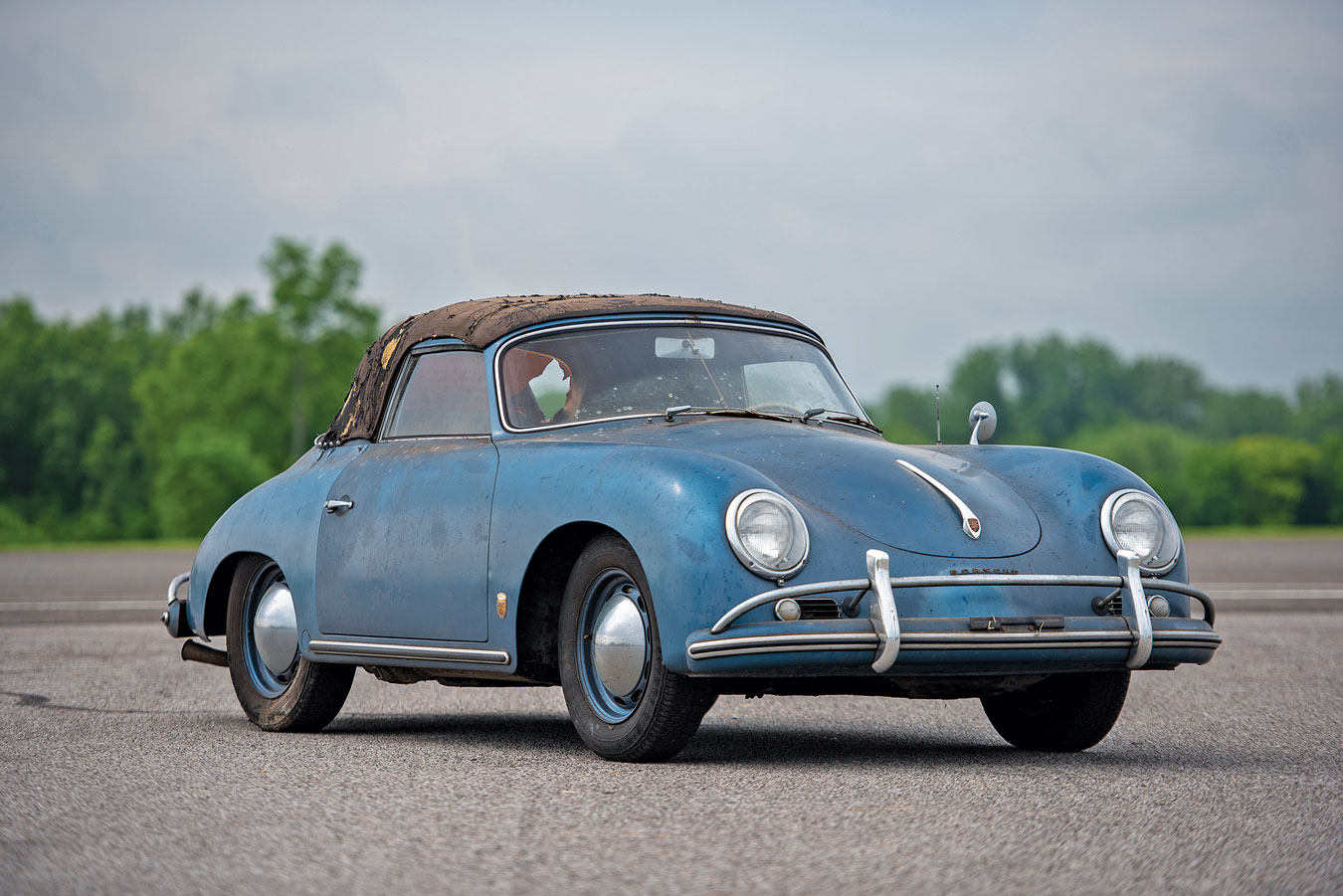Chassis Number: 61461
The term “barn find” has been vastly abused in the collector-car market, but here is a 356A cabriolet which was literally pulled out of an old building near Salem, OH. This matching-numbers cabriolet shows fewer than 46,000 miles — believed to be original — and was delivered in the rarely-seen Aquamarine Blue Metallic with a red leather interior.
The coachwork appears complete, including exterior trim with bumpers equipped with the U.S.-specification overriders. The paint is believed to be original. Exterior trim shows the expected wear of nearly 65 years, as does the original canvas top, but the folding mechanism is intact. The interior leather is in remarkable condition. A Telefunken AM/FM radio is in the dash, with the tube amplifier sharing space in the front trunk compartment with the car’s original toolkit, jack and spare wheel. Other details: The single outside rear-view mirror appears to be of British origin, a pair of OEM optional green plastic sun visors are attached to the windshield header, and the engine has been fitted with a Bursch-style exhaust.
Released by the factory on December 4, 1956, for shipment to Hoffman Motors in New York City, this cabriolet was first registered on January 28, 1957, to Mrs. Helen Spatholt of Leetonia, OH. It remained with her until 1989, when title was transferred to Mr. Donald Watkin of Washingtonville, OH. In 1993, the car was placed in a rural barn, where it would remain until recently, when his widow decided to sell it.
This cabriolet would be the perfect starting point for a comprehensive restoration. It should be expected that a desirable open 356 of this age will have suffered from rust in the usual locations, but there is a hugely supportive early Porsche restoration network, and virtually every factory part that cannot be properly restored is available. It is supplied with its original driver’s manual, Kardex copy, registration documents dating to 1957, a factory maintenance manual, and an early Stoddard parts catalog, as well as tools and a spare.

